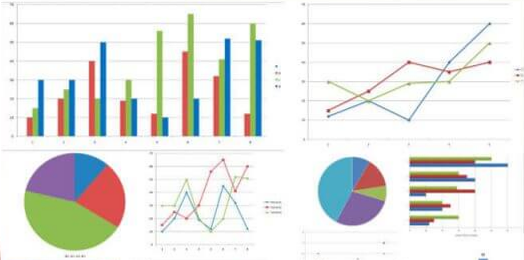Applied Analytics
What is Applied Analytics?
Applied Analytics is the practical application of data analysis techniques and tools to solve real-world problems and make data-driven decisions in various fields such as business, healthcare, finance, and more. It involves using statistical methods, predictive modeling, and machine learning to extract meaningful insights from data, which can then enhance operational efficiency, predict trends, and improve overall decision-making.
Role and Purpose of Applied Analytics
The primary role of applied analytics is to convert raw data into actionable insights that can have a tangible impact on business outcomes or other organizational goals. The purposes include:
- Enhancing Decision-Making: Providing evidence-based insights to support and improve decision-making.
- Improving Efficiency: Identifying inefficiencies and areas for improvement within processes and operations.
- Driving Innovation: Offering data-driven insights that can lead to developing new products, services, or business models.
- Predicting Trends: Using historical data to forecast future trends and behaviors, allowing organizations to prepare and strategize accordingly.
Components of Applied Analytics
Applied analytics encompasses several key components:
- Data Collection and Management: Gathering accurate and relevant data and managing it in a secure and accessible manner.
- Analytical Tools and Techniques: Utilizing statistical software, machine learning algorithms, and other analytical tools to process and analyze data.
- Insight Generation and Reporting: Converting analyzed data into understandable reports, dashboards, and visualizations that facilitate decision-making.
- Implementation of Insights: Applying the insights gained from data analysis to influence policies, strategies, and operations.
Importance of Applied Analytics
Applied analytics is crucial because it:
- Supports Proactive Measures: Allows organizations to anticipate issues and opportunities rather than reacting to them post-facto.
- Enhances Competitive Edge: Organizations using analytics effectively can gain significant competitive advantages by better understanding market dynamics and consumer behavior than their competitors.
- Improves Customer Satisfaction: Analyzing customer data helps understand and predict customer needs and preferences, leading to better service and product offerings.
Benefits of Applied Analytics
Implementing applied analytics offers several advantages:
- Informed Strategic Planning: Helps organizations plan more effectively for the future by providing data-backed insights into market conditions and business performance.
- Risk Reduction: Identifies potential risks and enables preventive measures to be implemented.
- Cost Efficiency: Identifies wasteful expenditures and areas where resources can be better allocated.
Examples of Applied Analytics in Practice
- Retail: Analyzing customer data to predict buying trends and optimize inventory levels.
- Healthcare: Using patient data to predict health outcomes and improve care delivery.
- Finance: Analyzing market data to identify investment opportunities and manage financial risk.
- Manufacturing: Monitoring production processes to predict equipment failures and optimize maintenance schedules.
Applied analytics is a powerful tool that spans various industries, enabling organizations to leverage data for strategic advantage, operational improvements, and enhanced decision-making capabilities. As data continues to grow in volume and complexity, the role of applied analytics becomes increasingly important in unlocking the potential of this data to drive innovation and success.
See Also
- Data Analytics
- Advanced Analytics
- Data Science: Discussing the broader field of data science, which encompasses the techniques and theories behind data analysis that are foundational to applied analytics.
- Business Intelligence: Explaining how business intelligence tools and practices overlap with applied analytics, focusing on how data is transformed into actionable insights.
- Big Data: Covering the concept of big data, including the technologies and challenges associated with analyzing vast, complex datasets, which is a common application area for analytics.
- Machine Learning: Discussing machine learning algorithms in applied analytics to automate data analysis and predictive modeling.
- Statistical Analysis: Explaining fundamental statistical methods that underpin much of applied analytics, including hypothesis testing, regression analysis, and variance analysis.
- Decision Support System (DSS): Covering the development and use of DSS, which utilizes applied analytics to aid in decision-making processes.
- Predictive Analytics: Explaining predictive analytics, a subset of applied analytics focused on predicting future outcomes based on historical data.
- Prescriptive Analytics: Discussing prescriptive analytics, which predicts future outcomes and suggests actions to benefit from the predictions.
- Data Visualization: Linking to data visualization techniques that help present data analysis clearly and effectively, enhancing the interpretability of complex data.
- Industry-Specific Applications: Discuss the application of analytics in specific sectors such as healthcare, finance, marketing, supply chain management, and sports, illustrating the diverse utility of applied analytics.
- Ethics and Data Privacy: Exploring the ethical considerations and data privacy issues that arise with applying applied analytics, particularly concerning data handling, consent, and transparency.

